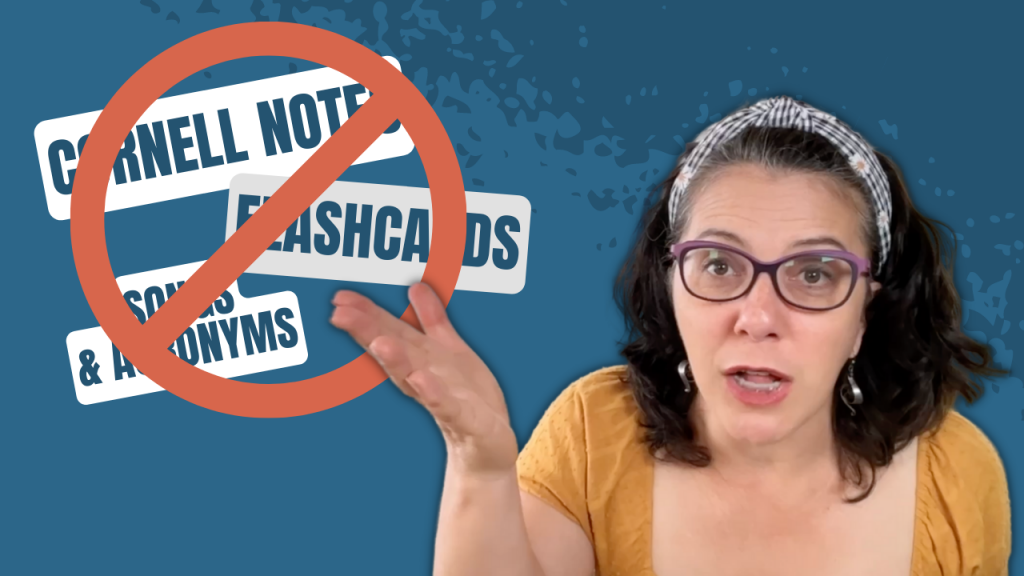Are you a teacher who prides yourself on offering students lots of really specific strategies for how to study for tests and quizzes in your classes?
Well, first of all, I want to say, “Yay, you!” I’m so glad you do!
But, I’d also like to caution you to watch out because sometimes I’ve noticed teachers offer strategies to students based on the assumption that techniques that worked well for them when they were learners will also work well for their students. This, unfortunately, is not always the case.
Today, we’re going to look at three common false assumptions that teachers make about strategies for effective studying, why they might not work, and what to do instead…or how to offer them in a way in which students are more likely to find these strategies successful.
Curious? Let’s dig in!

First, teachers often teach cute strategies to help students remember: acronyms, songs, fun techniques like that. It’s not that those things are wrong–I don’t want you to stop doing them–but I’ll explain in a little bit why these devices may not be working and what to do instead.
Next, let’s talk about flash cards. I commonly see teachers suggesting students use flashcards, on notecards, paper, Quizlet. Again, flashcards are a good study technique, but there is a caveat.
A third strategy that often worked for teachers growing up that doesn’t always work for students is Cornell Notes. A lot of student clients I work with–middle school, high school, even college–when they hear the phrase Cornell Notes, they cringe! They are so unmotivated to take them. Actually, Cornell notes really are a wonderful way to take notes, but the way teachers often suggest these strategies to students is more the problem than the strategy itself.
Here’s why these strategies may not be working as well for your students as you’d like:
When you just offer a strategy, such as an acronym, flashcards, or a specific note-taking system, the student doesn’t actually understand why those methods work and instead just follows your instructions for how to use the technique in a particular instance or class.
Without instruction in the brain science around learning and why a particular strategy works, the student doesn’t learn how to generalize this tip to other subjects or classes or how to use it in their own studying and learning.
There’s a way to use flashcards that’s God awful boring! They kind of work, but it takes a lot of effort to make them work. However, if students understand what the brain needs in order to learn, then they can use a flashcard at the right time, in the right place, and in the right way to enhance their learning when their brain is ready for it. It’s that “why” and “when” that I want students to be able to understand–not just the “what” of the strategy.
It’s also helpful to note, when you are providing lots of cute study strategies for students, you are working harder than the student! It’s not that I don’t want you to work hard, but I am looking for a collaboration between teachers and students. I’m looking for a relationship, and I see so many teachers right now completely burning out because you are working harder than your students. Some of that is because of institutional structures; some of that is because of the pandemic causing us to shift how we deliver information. And while some of it may be beyond your control, not all of it is.
So what should you do instead?
I highly recommend that you actually understand for yourself the simplest version of the science behind how students learn. I call that the Study Cycle. You can take a free mini-course that offers a few minutes of videos to help you better understand what the study cycle is so you can teach effective strategies AND why they’re effective.
If you have questions about it (or anything else!), you can always come ask me! I have a monthly office hours session designed to support teachers just like you who just need a few tweaks and you’re off and running. So please come to that! You can find out when the next date is and sign up for the Zoom link here.
Watch the study cycle video, try out some ideas in the classroom, and then come and report in about how it went and ask some follow-up questions at the office hours session. I love, love, love working with you!
See you again soon!

